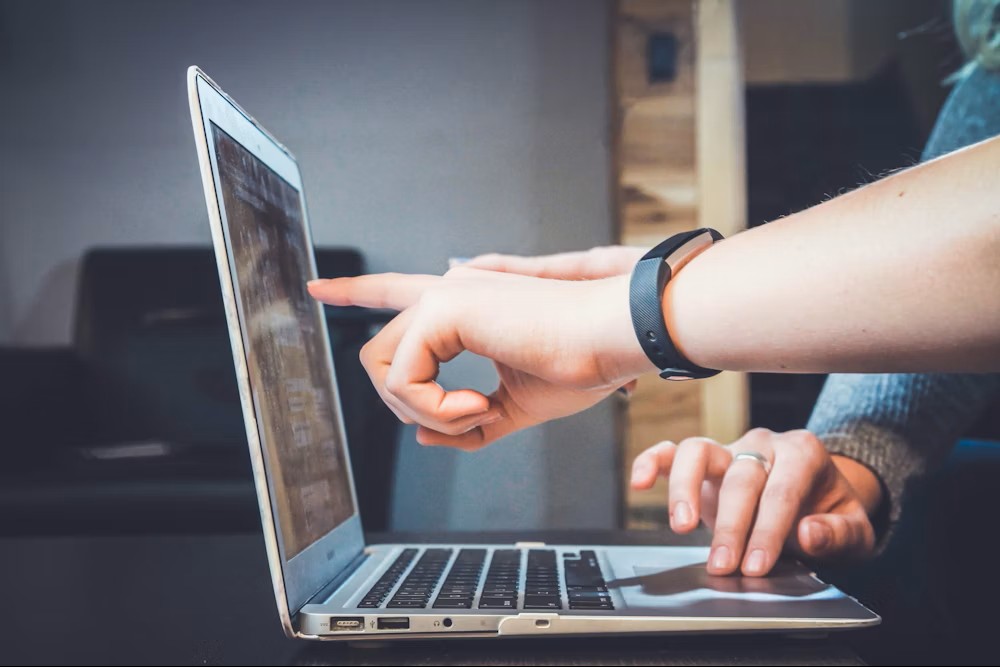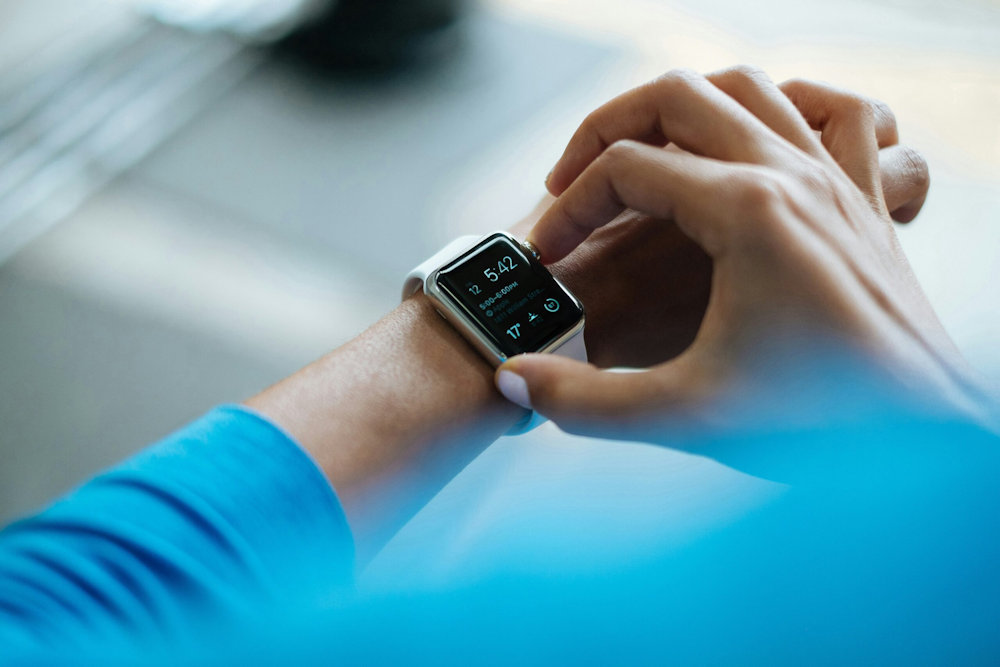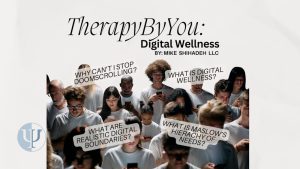Key Takeaways
- Loneliness is a serious health risk - as dangerous as smoking 15 cigarettes daily
- Technology can help or harm our social wellness depending on how we use it
- Digital wellness means balance - using technology intentionally to support mental health
- Setting boundaries with screens is essential for better sleep and relationships
- Therapists can help you build healthier digital habits and reduce tech stress
Introduction
Loneliness is more than just feeling sad, it’s a health risk. The U.S. Surgeon General warns that chronic social isolation can increase your risk of early death as much as smoking 15 cigarettes a day (EveryMind, 2025). That’s why July is Social Wellness Month, a time to focus on how we stay connected to others.
Social wellness means having strong, healthy relationships and feeling supported in your community. It’s about more than just being social, it’s that feeling we have of belonging.

But in today’s world, that can feel impossible. We’re more connected through screens than ever before, yet many people still feel alone. This is where digital wellness comes in. Digital wellness means using technology in a healthy, balanced way, so it supports our mental health, not harms it (Cervantes, 2025).
This article explores how we can optimize and get healthy value from these devices rather than allowing them to hurt us. We’ll also talk about the risks of too much screen time, and how therapists and families can help create healthier habits. During Social Wellness Month, it’s the perfect time to learn how to use the internet to feel more connected, not more alone.
How Digital Tools Can Help (When Used Wisely)
Technology isn’t all bad. When used with care, digital tools can actually help us feel more connected, especially for young people and older adults.
👴 Seniors: Staying Connected Through Screens
- Video calls let grandparents talk to their grandkids
- Online classes and clubs provide community from home
- Streaming services for church and community events
- Support groups for health conditions and interests
- Reduces isolation for those with mobility issues
- Improves mood and mental sharpness (Sen et al., 2022)
👥 Youth: Real Friendships in Digital Spaces
- Build friendships in art and gaming communities
- Find belonging when offline connections feel limited
- LGBTQ+ support and safe spaces for self-expression
- Stress management tools and coping resources
- Creative outlets for self-expression and identity
- Intentional social media use can offer real support (Callahan, 2025)
🎯 The Key is Balance and Intention
Not all screen time is equal. There’s a difference between:
- Watching funny videos to relax after a hard day
- Joining an online support group to talk about real feelings
- Scrolling mindlessly for hours, feeling worse and more exhausted after.
The first two can be good for us. The last one? Not so much.
Therapists call this idea digital emotion regulation. That means knowing how digital tools affect your feelings—and choosing ways to use them that help, not hurt (Hollenstein & Faulkner, 2024).
Here’s one way to think about it:
Your brain is like an engine. When it’s running hot all day—stressed out, overstimulated, overworked—it needs to cool down.
But instead of giving it a break, watching fast, flashy videos or arguing online is like revving the engine even harder. It doesn’t help it cool down. It just runs hotter.
If you want real rest, the answer isn’t more stimulation—it’s less.
When Screens Start to Hurt: Risks of Too Much Digital Time
We’ve talked about the good stuff. But now let’s talk real: there’s a limit to how much tech is helpful. When screens start taking over, they can wear us down mentally, emotionally, even physically.
It’s Easy to Go Overboard
Apps are built to keep you hooked. They’re designed with colors, sounds, and endless scroll to grab your attention and hold it. So it’s no surprise that many people—especially kids and teens—end up spending way more time on screens than they mean to.
But too much screen time isn’t just a “bad habit.” It’s been linked to more anxiety, more sadness, and less sleep, especially when kids spend more than 3 hours a day online (Callahan, 2025).
Late-night scrolling? It messes with your sleep. Comparing yourself to perfect-looking people online? It hurts your confidence. Skipping face-to-face time with others? It leaves you feeling alone, even if you’ve been “connected” all day.
Cyberbullying Is Real
Online bullying isn’t just kids being mean. It’s real harm, and it happens way too often. Nearly 6 in 10 teens say they’ve been harassed online—called names, threatened, or worse (Pew Research, 2023).
And the mental health impact? Huge. It’s linked to depression, anxiety, and even suicidal thoughts in some young people. Some offer simplistic suggestions like just turning off your phone, in theory great! but in actually? It doesn’t feel practical to our youth, the social media sphere is a massive form of connection that all their peers are involved with. It’s about balance.
For teens who are already dealing with racism, ableism, or LGBTQ+ discrimination, that pain can be even heavier. And what makes it worse? It’s often happening alone, in silence, on their phone or computer screen.
Feeling Fried from Too Much Info
Ever felt like your brain can’t take in one more headline? That’s being digitally overwhelm. It’s the stress that builds up when your brain is stuck in a loop of news, alerts, and messages. It’s that tight-chest feeling after too much doomscrolling.
Being informed is good. But being constantly plugged in? That’s exhausting. It jacks up your stress hormones(cortisol) and wears down your patience.
A mental health group recently said it best: Online spaces can be overwhelming—especially when the content lacks compassion (EveryMind, 2025).
So What’s the Fix?
It’s not about deleting all your apps. It’s about knowing when tech helps you—and when it hurts.
That’s where therapists, parents, and teachers come in. We can help kids and adults recognize those patterns, set better boundaries, and feel okay logging off when needed.
It’s not weakness to take a break. It’s strength.
Building a Healthier Relationship With Screens
If tech isn’t going away, how do we live with it better? Digital wellness doesn’t mean quitting everything. It means using it in ways that help more than they hurt.
Here’s how to get started.
1. Set Clear Boundaries (and Stick to Them)
You don’t need to throw your phone out. But you do need some rules. Try things like:
- No screens at the dinner table
- Turning off notifications after 9 p.m.
- No phones in the bedroom at night

2. Take Real Breaks
You don’t have to “earn” rest. Unplugging is a form of mental hygiene. Try:
- Screen-free mornings or meals
- A full day each week without social media
- Using airplane mode for a few hours on weekends
If that feels hard? Start small. One hour counts. The goal isn’t perfection—it’s relief. Think of it like eye drops for your brain. You’re not quitting screens forever. You’re just giving your mind a second to breathe.
3. Curate Your Feed
A big part of digital stress comes from what’s in your feed, not just how long you scroll.
So clean it up.
- Unfollow or mute accounts that make you feel bad
- Follow pages that make you laugh, learn, or feel seen
- Don’t doomscroll. Be intentional about what you take in
Social media is like food: some of it’s junk, some of it’s good, and too much of either will make you feel sick. Find your balance.
4. Connect More—Compare Less
Not all screen time is created equal. A video call with your cousin across the country? That’s connection. Mindlessly watching strangers vacation in Bali? That’s comparison.
Use tech to reach out, not spiral in.
Text a friend. Send a funny meme. Join an online group that feels like you. Technology can support real connection, but only if we use it that way.
5. Watch for Signs of Overload
Developing insight is such a powerful skill, notice If you’re snapping at people, skipping meals, doomscrolling before bed, or feeling drained. Those are red flags and a clear warning that you’re feeling uneven.
Ask yourself:
- Am I using this to feel better, or to numb out?
- Do I feel more relaxed, or more anxious, after I scroll?
- When was the last time I connected with someone in person?
No judgment. Just awareness.
How Therapists Can Help (and What Clients Should Know)
Therapists aren’t just here to talk about your past. They’re here to help with the right-now stuff too, including how your digital life affects your mental health.
Let’s be real: most of us didn’t grow up learning how to “use the internet in a healthy way.” And many parents or educators still don’t know how to talk about screens without shaming or blaming. That’s where mental health professionals come in.
1. Naming the Patterns
A good therapist will ask more than “How was your day?”
They’ll ask:
- How much time are you spending online?
- How do you feel when you log off?
- What kinds of spaces are you in digitally?
Whether it’s a teen comparing themselves on Instagram or an older adult who’s isolated but scared of tech, therapists can help make those patterns visible, without judgment.
2. Co-Creating Digital Boundaries
Therapists don’t hand you a list of rules. They help you build what works for your life.
That could mean:
- Making a plan to sleep without your phone in the room
- Talking through the guilt of not answering messages right away
- Building confidence to take a weekend off of social media
When the plan comes from you—and it’s realistic—you’re way more likely to stick to it.
3. Encouraging Real Connection
Digital life isn’t fake. But offline connection still matters.
Therapists can help clients:
- Practice making plans or reaching out in real life
- Build friendships that aren’t just comment-section deep
- Find the courage to leave draining online spaces
Even something simple like suggesting a client call a friend instead of texting can make a difference.
4. Helping You Cope With Digital Stress
Therapists are trained in coping skills—and those work online too.
If a client is anxious after doomscrolling, a therapist might walk them through grounding exercises. If someone gets harassed online, they might talk through how to respond (or not), and how to emotionally process it.
They’ll also talk about what recharges you—because tech doesn’t have to take. It can also support you, if you know how to use it.
5. Being Real About AI Tools and Apps
Some people now turn to AI therapists or mood-tracking apps. And while those tools can offer support in a pinch, they’re not the same as human therapy.
A real therapist:
- Picks up on nuance
- Builds a relationship with you
- Can adapt to your culture, your story, and your life
AI can help you reflect between sessions. But it can’t replace the power of being seen and heard by someone who gets it.
Final Thoughts: You Can Feel Better
We’re more connected than ever—but a lot of people still feel alone.
This isn’t about being “anti-tech.” It’s about making tech work for us, not against us. Phones, apps, video calls—they all have the power to build real connection. But that only happens when we slow down, check in with ourselves, and set better boundaries.
Whether you’re a teen trying to feel seen, a parent unsure how to guide your kids, or an adult trying to get better sleep—you’re not doing this wrong. This is all still new, and we’re figuring it out together.
Therapists can help. And so can friends, families, and support groups. When we learn to use the internet as a tool (not a trap), we start to reclaim what really matters: human connection.
📱 Digital Wellness Resource Guide
Digital Wellness Resource Guide by Mike Shihadeh
✅ Ready to Build Healthier Digital Habits?
Frequently Asked Questions
Digital wellness means using technology in a way that supports your mental, emotional, and social health. It's about balance—not quitting tech, but using it in a way that feels good and doesn't harm your well-being.
This includes setting healthy boundaries, being intentional about your digital consumption, and using technology to enhance rather than replace real human connections.
Too much screen time—especially over 3 hours a day—can raise the risk of anxiety, depression, and sleep problems in youth. It can also lead to emotional burnout and social withdrawal.
Research shows that excessive screen time can:
- Disrupt sleep patterns and quality
- Increase feelings of isolation and loneliness
- Contribute to attention and focus issues
- Lead to physical health problems like eye strain and poor posture
oo much screen time—especially over 3 hours a day—can raise the risk of anxiety, depression, and sleep problems in youth. It can also lead to emotional burnout and social withdrawal.
Research shows that excessive screen time can:
- Disrupt sleep patterns and quality
- Increase feelings of isolation and loneliness
- Contribute to attention and focus issues
- Lead to physical health problems like eye strain and poor posture
Social media can cause comparison, low self-esteem, and exposure to cyberbullying. These experiences are linked to higher rates of anxiety, depression, and even suicidal thoughts in teens.
Common risks include:
- Social comparison and feelings of inadequacy
- Cyberbullying and online harassment
- Fear of missing out (FOMO)
- Addiction-like behaviors and compulsive checking
- Exposure to harmful content and misinformation
Start small: turn off notifications, set time limits, and take breaks before bed. Try "tech-free zones" like no phones at the dinner table or in the bedroom. Use apps or timers to help stay on track.
Effective strategies include:
- Setting specific time limits for different apps
- Creating tech-free zones in your home
- Using "Do Not Disturb" modes during focused time
- Scheduling regular digital detox periods
- Being intentional about when and why you check your phone
Yes. Therapists can help you understand your digital habits, reduce tech-related stress, and build a healthier relationship with screens. They also help families and teens build media plans together.
Therapists can assist with:
- Identifying unhealthy digital patterns
- Developing personalized digital wellness strategies
- Addressing underlying issues that drive excessive screen use
- Helping families create healthy media plans
- Processing the emotional impact of online experiences
Works Cited
- EveryMind. (2025). “Managing Digital Stress and Staying Resilient.”
- Cervantes, C. (2025). WellU Digital Wellness Newsletter, Huston-Tillotson University.
- Sen, K., et al. (2022). SSM – Population Health. Digital tech use and reduced social isolation in older adults.
- Callahan, E. (2025). Behavioral Health News. The Impact of Social Media on Youth Mental Health.
- Hollenstein, T., & Faulkner, K. (2024). Journal of Research on Adolescence. Digital emotion regulation framework.
- Pew Research Center. (2023). Teens and cyberbullying.
- Digital Wellness Lab. Family Digital Wellness Guide, Boston Children’s Hospital.
- Appleton, C. (2024). Tech and AI in Behavioral Health, Behavioral Health News.





